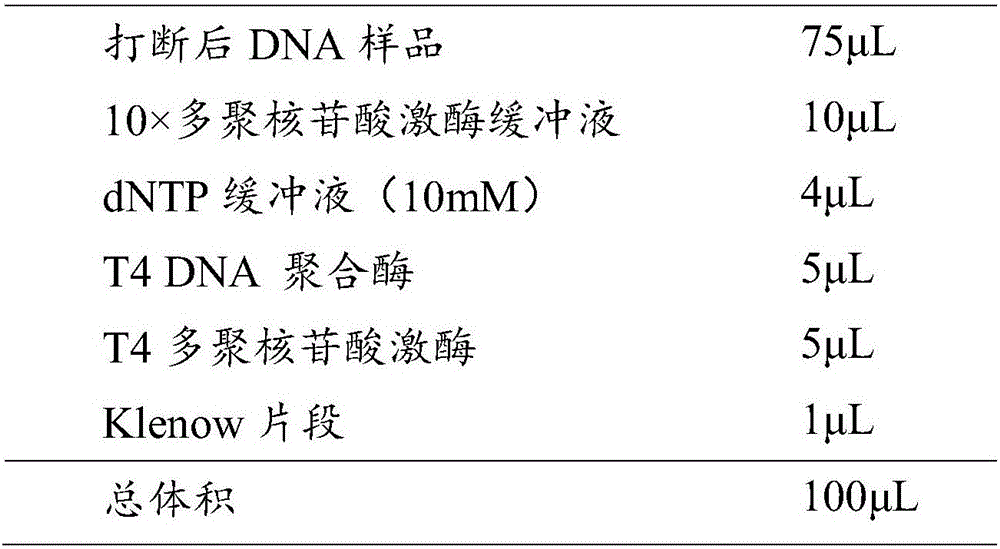Device for detecting gene fusion of circulating tumor DNA (deoxyribonucleic acid) samples
A gene fusion and sample technology, which is applied in special data processing applications, instruments, electrical digital data processing, etc., can solve the problems of slow detection speed, low false positives, and the need for assembly, so as to reduce the number of comparisons and improve stability Effect
Active Publication Date: 2017-06-13
ZHEJIANG ANNOROAD BIO TECH CO LTD +2
View PDF4 Cites 16 Cited by
- Summary
- Abstract
- Description
- Claims
- Application Information
AI Technical Summary
Problems solved by technology
CREST is currently one of the mainstream algorithms for detecting Fusion genes. This algorithm uses the assembly algorithm to achieve two assemblies to eliminate false positives. Therefore, its main advantage is that the false positives are low, but at the same time, due to the need for two assemblies, the detection speed is slow , high resource requirements, need to assemble and other shortcomings; at the same time, the assembly effect will also be affected by the coverage and the length of the insert
The content of free DNA in plasma is very small, fragmentation is serious, and circulating tumor DNA only accounts for 0.02%-50% of the total free DNA in plasma. In addition, the amount of ctDNA released will be affected by the patient's condition, cancer type, stage, medication, etc. Due to the influence of comprehensive factors, the coverage of ctDNA samples is reduced, and this problem is particularly obvious in tumor circulating DNA samples, thus affecting the fusion detection results
Therefore, how to deal with the problems of slow detection speed, high system resource requirements, and the need for assembly in the process of fusion gene detection, especially the detection of low coverage samples has become a major problem in this field.
Method used
the structure of the environmentally friendly knitted fabric provided by the present invention; figure 2 Flow chart of the yarn wrapping machine for environmentally friendly knitted fabrics and storage devices; image 3 Is the parameter map of the yarn covering machine
View moreImage
Smart Image Click on the blue labels to locate them in the text.
Smart ImageViewing Examples
Examples
Experimental program
Comparison scheme
Effect test
Embodiment 1
[0093] Embodiment 1 The device for detecting circulating tumor DNA gene fusion of the present invention
the structure of the environmentally friendly knitted fabric provided by the present invention; figure 2 Flow chart of the yarn wrapping machine for environmentally friendly knitted fabrics and storage devices; image 3 Is the parameter map of the yarn covering machine
Login to View More PUM
 Login to View More
Login to View More Abstract
The invention relates to a device for detecting gene fusion of circulating tumor DNA (deoxyribonucleic acid) samples. The device comprises a sequencing data acquisition module, a comparison module, a re-comparison module, a real fusion breakpoint judgment module and an output module. The device for detecting the gene fusion of the circulating tumor DNA samples has the advantages of high detection speed and stability and low resource requirement.
Description
technical field [0001] The invention relates to the field of gene fusion detection, in particular to a device and method for detecting gene fusion of circulating tumor DNA samples. Background technique [0002] Tumor cells will release genomic DNA into the blood, and these mutated DNA will also be released into the peripheral blood, which is called circulating tumor DNA (ctDNA). It has been reported in the literature that the concentration of free DNA fragments with a size of 100 to 400 bp in the plasma of cancerous people is significantly higher than that of normal people, which can be used as a marker for screening. Another study found that circulating tumor DNA has already begun to appear in the blood of patients with early-stage carcinoma in situ (primary cancer). Due to the short half-life of circulating DNA in peripheral blood, circulating tumor DNA can truly reflect the true situation of gene mutations in diseased tissues of patients. The application of circulating ...
Claims
the structure of the environmentally friendly knitted fabric provided by the present invention; figure 2 Flow chart of the yarn wrapping machine for environmentally friendly knitted fabrics and storage devices; image 3 Is the parameter map of the yarn covering machine
Login to View More Application Information
Patent Timeline
 Login to View More
Login to View More IPC IPC(8): G06F19/20G06F19/22
CPCG16B25/00G16B30/00
Inventor 董永芳荆瑞琳陈利斌隋光磊董超玄兆伶李大为梁峻彬陈重建
Owner ZHEJIANG ANNOROAD BIO TECH CO LTD
Features
- R&D
- Intellectual Property
- Life Sciences
- Materials
- Tech Scout
Why Patsnap Eureka
- Unparalleled Data Quality
- Higher Quality Content
- 60% Fewer Hallucinations
Social media
Patsnap Eureka Blog
Learn More Browse by: Latest US Patents, China's latest patents, Technical Efficacy Thesaurus, Application Domain, Technology Topic, Popular Technical Reports.
© 2025 PatSnap. All rights reserved.Legal|Privacy policy|Modern Slavery Act Transparency Statement|Sitemap|About US| Contact US: help@patsnap.com



